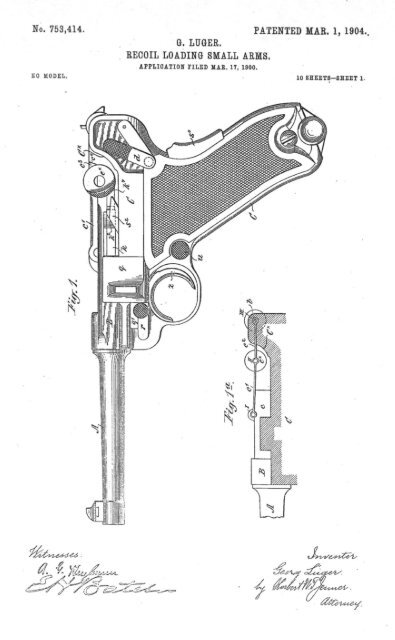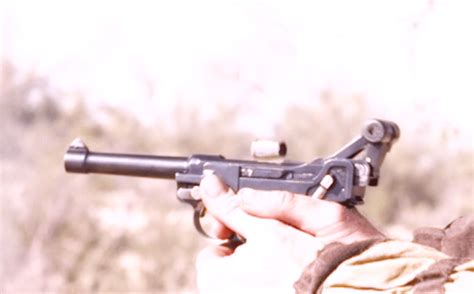The US first tested the Luger in 1901, and it seemed potentially good enough that the government spent $15,000 to buy 1,000 of the pistols (in 7.65mm Luger; the only cartridge available at the time) for field trials. The trials resulted in a variety of complaints, but particular among them was a dislike for the small caliber. In response, Georg Luger necked the 7.65mm round up to 9mm, and the US would be the first country to trial the new model. After presenting 3 samples in 1903, Luger made a deal to swap 50 of the American 7.65mm pistols for 50 new 9mm ones. The US also specified that new guns had to be fitted with a cartridge counter grip system designed by one Graham Powell. The resulting guns (s/n 22401-22450) were delivered in April of 1904.

American testing did not find the 9mm much more satisfactory than the old 7.65mm, however. At this same time, the Thompson-La Garde tests of terminal ballistics were concluding that a new service pistol should be no less than .45 caliber. Luger would make one last effort to interest the US in 9mm with a duplex load in 1906, but this would also fail. Instead, he would redesign the Luger for .45 ACP and enter that in the US 1907 pistol trials.
The round counting mechanism is operated by a screw that raising with the follower of the magazine as it empties. It is visible through a clear panel on the left face of the pistol for right handed shooters.
The magazines made for it have been specifically modified to ensure when disassembled and reassembled its special follower won’t be swapped with a standard, non round counting, follower.

Ian’s video: [12:25] https://youtu.be/S3iuBDD5FrA?si=


For every feature, you’ve got to consider that people are absolute morons